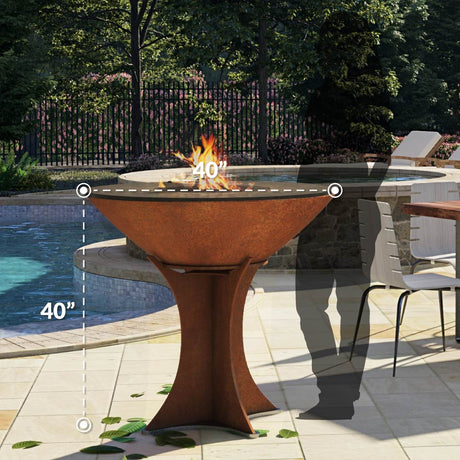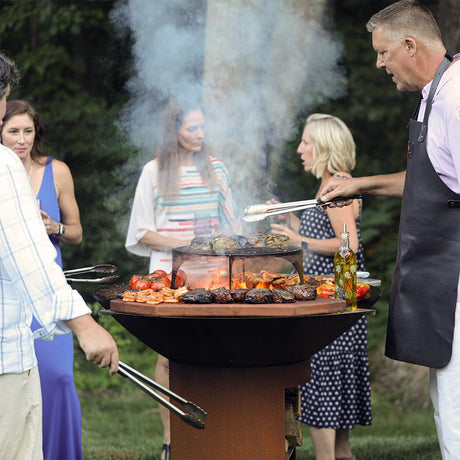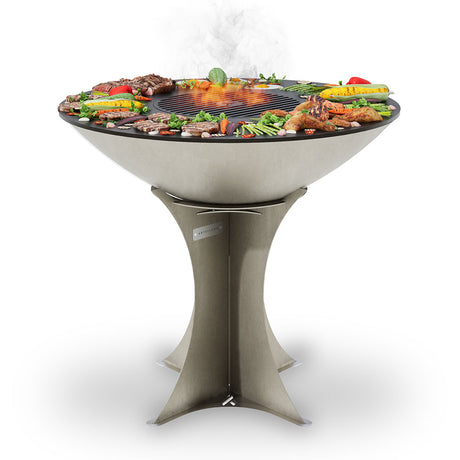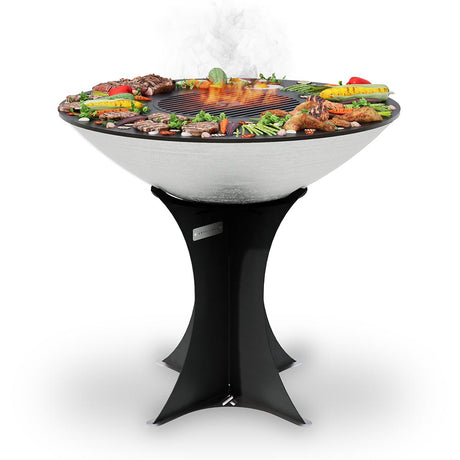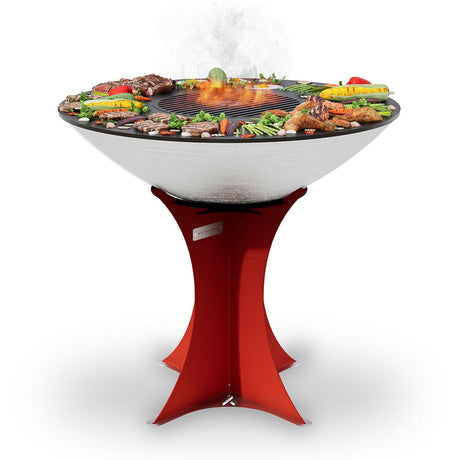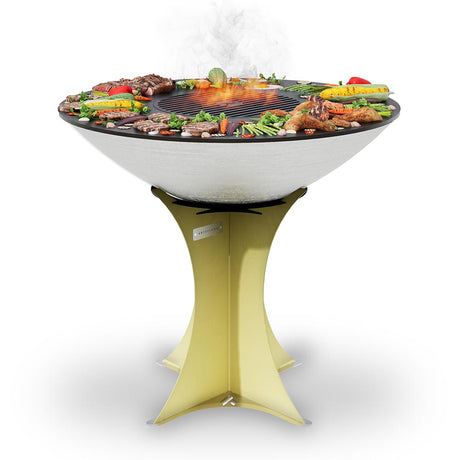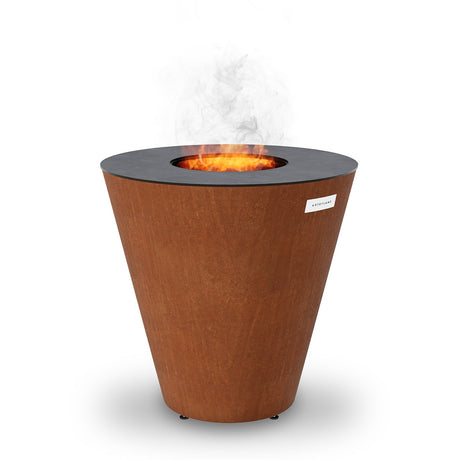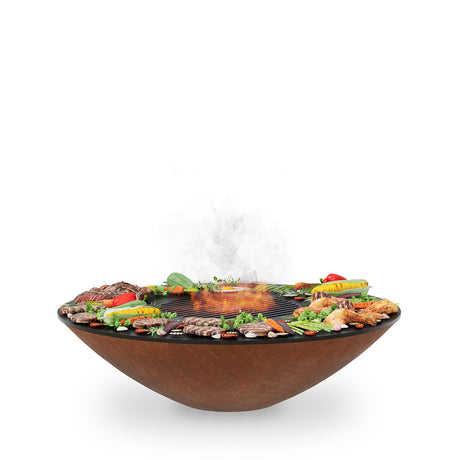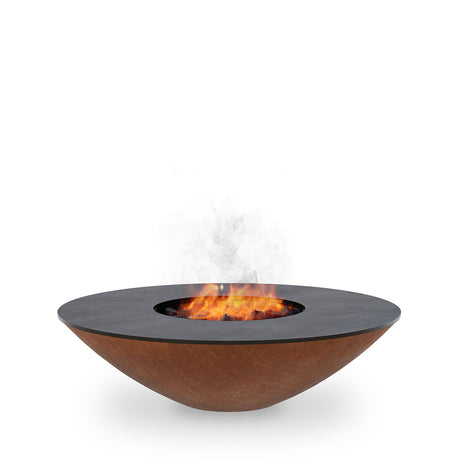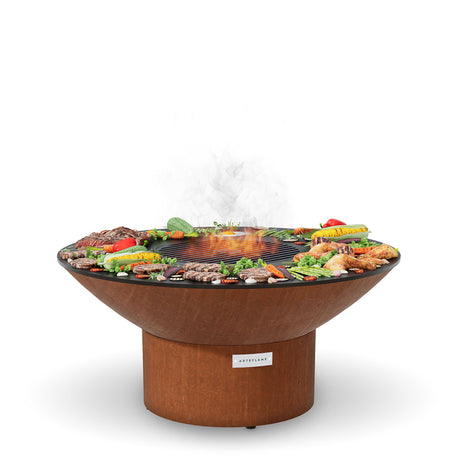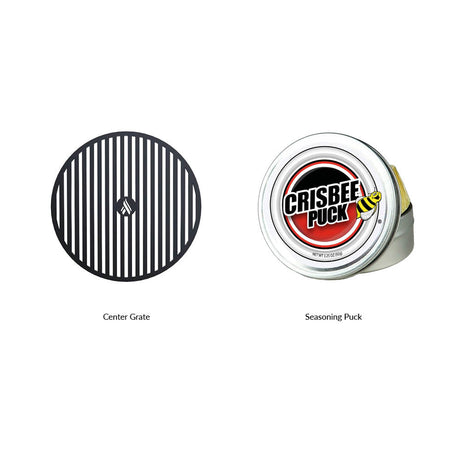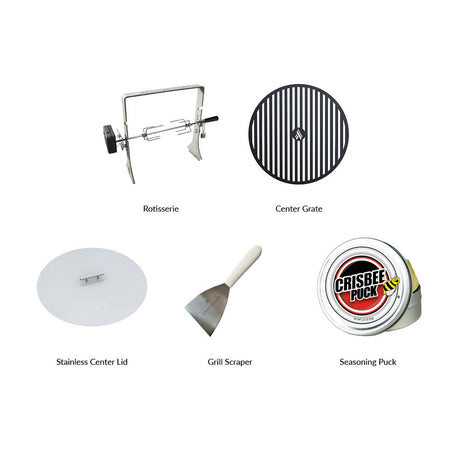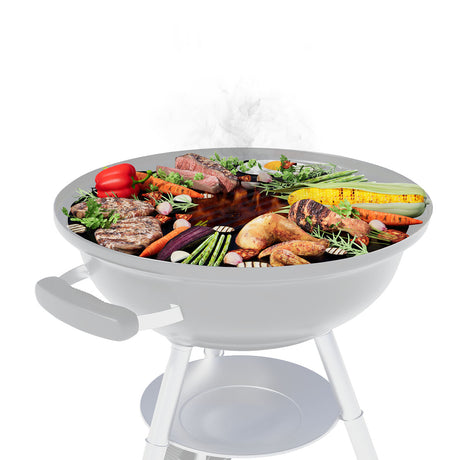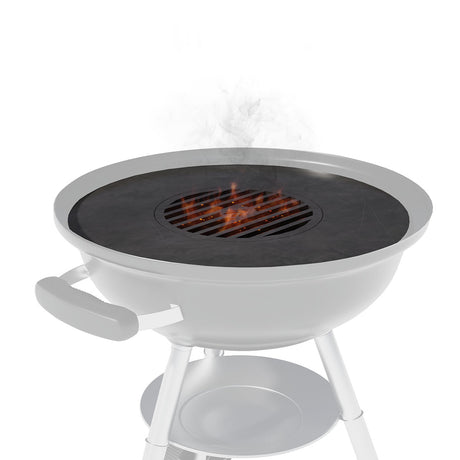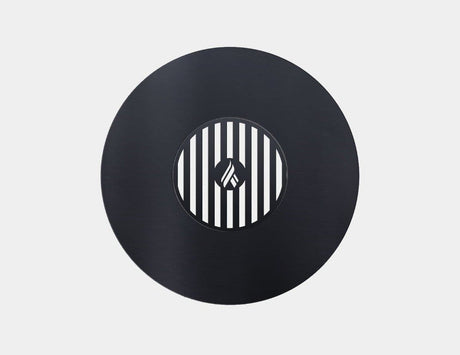Ultimate Guide to Grilling Beef on the Arteflame
Grilling beef to perfection requires the right combination of heat, technique, and timing. The Arteflame grill’s unique design with its ultra-hot center grate and surrounding flat-top surface gives you the flexibility to sear and cook beef to any level of doneness. Follow this step-by-step guide to ensure your beef is grilled to juicy, flavorful perfection.
1. Choose the Right Cut of Beef
Different cuts of beef perform better with different cooking methods. Here are some of the best cuts for grilling:
- Steaks: Ribeye, strip, filet mignon, and porterhouse are great for high-heat grilling and fast cooking.
- Ribs: Short ribs and beef back ribs benefit from slower cooking and indirect heat.
- Burgers: Use ground beef with an 80/20 fat-to-lean ratio for the juiciest burgers.
- Brisket or roast: These are best seared and then slow-cooked for tender results.
2. Prep the Grill
Start by lighting your Arteflame grill. Pour vegetable oil on three paper napkins and place them inside the grill, stacking firewood over the top. Light the napkins to start the fire and let the grill heat up for about 20 minutes. The center grill grate should reach over 1,000°F for searing, while the surrounding flat-top surface will provide a range of temperatures for more controlled cooking.
3. Season the Beef
No matter what cut of beef you're grilling, a simple seasoning of salt and pepper is often the best way to bring out the meat’s natural flavor. However, you can also use additional seasonings depending on your taste:
- Steaks: Salt, pepper, garlic powder, and a bit of butter for basting.
- Ribs: Apply a dry rub with paprika, brown sugar, chili powder, and cayenne for a BBQ kick.
- Brisket: Use salt, pepper, garlic, and maybe a touch of mustard or a BBQ rub.
Tip: Let the beef come to room temperature before grilling to ensure even cooking.
4. Sear the Beef
Place your beef directly on the center grill grate for a hot sear. This step is crucial for locking in the juices and creating a flavorful crust. Depending on the cut, sear each side as follows:
- Steaks: Sear for 2-3 minutes on each side.
- Ribs: Sear for about 3-4 minutes per side, rotating for even caramelization.
- Burgers: Sear for 2-3 minutes per side, depending on thickness.
- Roast or brisket: Sear all sides for 4-5 minutes to create an even, crispy exterior.
Basting Tip: Use butter to baste your steaks or roasts while searing. It adds richness and helps create a deeper crust.
5. Finish Cooking on the Flat-Top Cooktop
After searing, move the beef to the outer flat-top cook surface to finish cooking to your desired doneness. The flat-top’s lower temperature helps prevent burning while slowly bringing the meat up to temperature. Here’s how to finish different cuts:
- Steaks: Move the steaks to the outer edge and cook for 5-10 minutes, depending on thickness and doneness preference. Use a meat thermometer to check. Medium-rare is around 130°F, medium is 140°F.
- Ribs: After searing, cook the ribs on the flat-top over medium-low heat for 1-2 hours until they are tender.
- Brisket or roast: Let the roast cook on the flat-top for 1.5 to 2 hours, rotating occasionally. For brisket, cook until the internal temperature hits around 200°F for ultimate tenderness.
6. Use a Meat Thermometer
A meat thermometer is the best tool for determining when your beef is perfectly cooked. Here are the internal temperature guides:
- Rare: 120°F to 125°F
- Medium-rare: 130°F to 135°F
- Medium: 140°F to 145°F
- Medium-well: 150°F to 155°F
- Well-done: 160°F and above
Tip: Always remove the beef when it’s about 5-10°F below your target temperature, as it will continue to cook while resting.
7. Rest the Meat
After removing the beef from the grill, let it rest for 5-10 minutes (for steaks or burgers) or 15-20 minutes (for larger cuts like brisket or roasts). Resting allows the juices to redistribute within the meat, making it more tender and juicy.
8. Slice and Serve
When cutting larger pieces of beef, always slice against the grain. This shortens the muscle fibers and makes the meat more tender when eaten.
Grilling Tips for Success
- Control the heat: Keep larger cuts of beef like roasts or briskets closer to the cooler edges of the flat-top surface to avoid burning.
- Butter baste: Basting with butter during grilling adds incredible flavor and moisture to steaks and roasts.
- Watch for flare-ups: Since the Arteflame grill cooks with real wood, keep an eye out for flare-ups when the beef fat drips onto the fire. Simply move the meat to another spot if necessary.
Conclusion
Grilling beef on the Arteflame is a rewarding process that results in mouthwateringly seared exteriors and perfectly tender interiors. With the right techniques and timing, you can create restaurant-quality beef at home, whether you’re grilling steaks, ribs, or roasts. Enjoy the versatility of your Arteflame by mastering heat zones and cooking methods!
Beef Grilling Variations
- Garlic Butter Ribeye: Grill ribeyes and baste with garlic butter for a rich, savory crust.
- BBQ Short Ribs: After searing, cook the short ribs with a BBQ sauce glaze for sweet and smoky flavors.
- Herb-Crusted Beef Roast: Rub the roast with a mixture of rosemary, thyme, garlic, and olive oil before grilling for an aromatic crust.
- Spicy Burger: Add a spicy rub of cayenne, paprika, and cumin to your burger patties before searing for a fiery flavor.
- Smoked Brisket: Add wood chips to the fire to infuse your brisket with a deep smoky flavor while slow-cooking it on the flat-top.
Best Pairings for Grilled Beef
- Grilled corn on the cob
- Roasted potatoes
- Grilled mushrooms
- Fresh green beans with garlic butter
Now, you’re ready to grill the perfect beef on your Arteflame! Enjoy juicy, flavorful beef with a crispy sear and tender inside, whether you're grilling steaks, ribs, or larger roasts.



